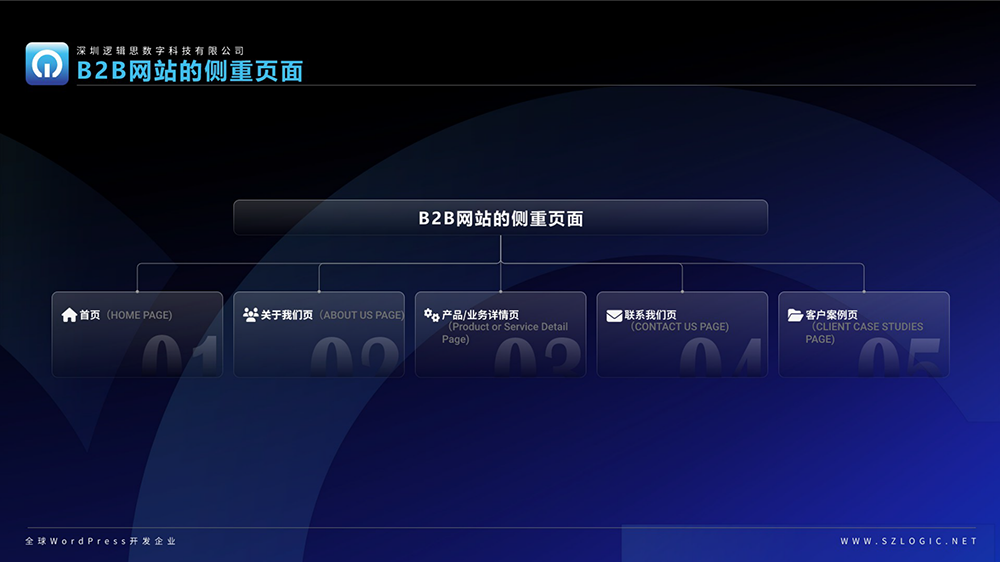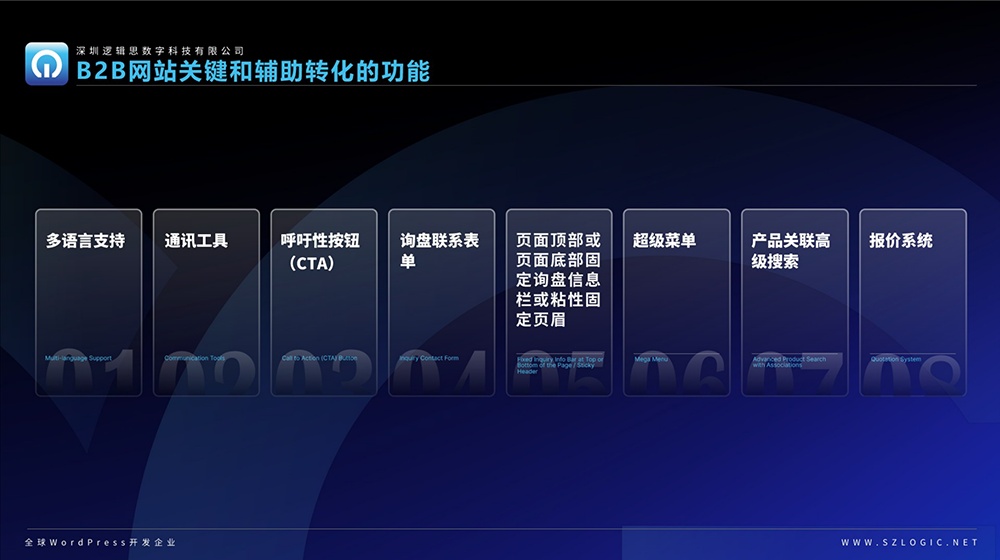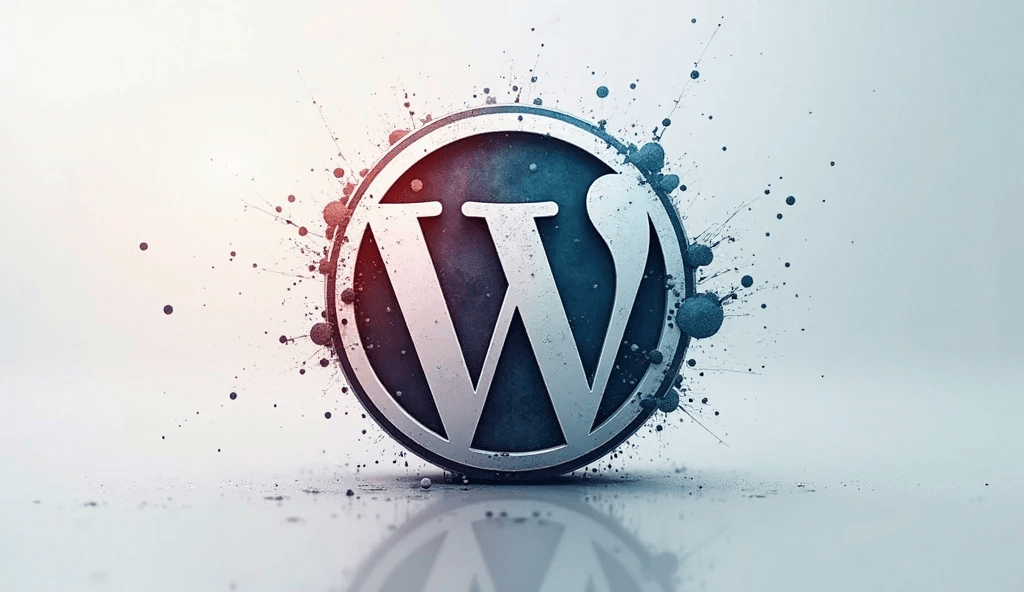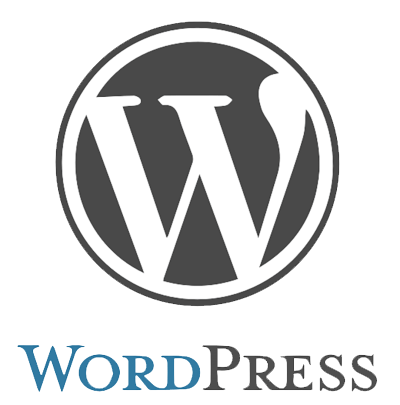Planning Priorities for B2B Website Design and Development

In today’s increasingly fierce digital business competition, B2B websites—or B2B independent sites—are no longer just online business cards for enterprises to display product information but key battlegrounds undertaking core commercial functions such as marketing, customer acquisition, and deal closing. Whether targeting domestic corporate clients or engaging in global cross-border trade, the fundamental goal of B2B independent sites remains clear: to acquire high-quality traffic through precise internet marketing techniques and guide inquiry conversion into orders and partnerships.
However, the success of a B2B website is never simply about “building a website.” Truly efficient B2B independent sites embody carefully considered strategic planning and system design focused on business objectives. Website construction is merely a phase of project implementation, whereas planning is the starting point and soul of the entire project. It determines how the website reflects enterprise advantages, presents product information, guides user behavior, and promotes sales results.
As a long-term practitioner focusing on B2B website design and development, the author always adheres to the viewpoint that no successful website is accidental; every structural arrangement and functional design is backed by clear business logic and user insights. This article will analyze the key planning points of B2B independent sites in depth to help enterprises aiming to build professional-level B2B websites clarify direction, avoid detours, and win at the starting point before project initiation.
The following content will be explained according to the pre-planned table of contents. For easier reading and searching, each chapter title in the directory is embedded with anchor links, allowing readers to click titles directly to jump to corresponding sections based on their interests for more efficient selective reading.
- Pages Required for B2B Website Design and Development
- Home Page: First Impression Determines Trust Starting Point
- About Us Page: Building Trust and Brand Heritage
- Product/Service Detail Page: Showcasing Professional Capabilities and Solutions
- Customer Case Page: Demonstrating Past Successes to Enhance Credibility
- Contact Us Page: Lowering Communication Barriers to Promote Conversion
- Common Functions Required for B2B Websites
- Multilingual Support: Infrastructure to Serve Global Customers
- Instant Messaging Tools: Shorten Inquiry Path
- CTA Call-to-Action Buttons: Guide Actions and Promote Conversion
- Contact Forms and Inquiry Systems: Windows to Capture Sales Leads
- Mega Menus and Fixed Navigation: Improve Access Efficiency
- Fixed Footer Information Modules: Enhance Product Page Guidance
- Advanced Search and Product Filtering: Precisely Match Customer Needs
- Online Quotation System: Automatically Generate Preliminary Quote Feedback
- Best Site-Building Systems for B2B Websites
One、Pages Needed for B2B Website Design and Development

In the construction of B2B independent sites, the website’s page structure is not merely a visual display but also part of the marketing strategy. An efficient B2B website should have page designs centered around core business objectives, namely: showcasing a professional image, conveying trustworthy information, promoting business inquiries, and facilitating order conversion. In the B2B page solutions organized by Logic Digital Technology, core pages typically include: Home, About Us, Product or Service Details, Customer Cases, and Contact Us.
Each page is not isolated; behind it lies the mission to foster visitor trust and drive inquiry conversion. In B2B website planning, the content arrangement and functional design of pages must revolve around business goals to form a clear logic and smooth user journey. Only then can the website truly become a tool that boosts business growth rather than just an online showcase. Below, the author will detail the functional positioning of each page and its important value in the B2B conversion path.
Home Page: First Impression Determines Trust Starting Point
The homepage of a B2B website is not only the brand’s first impression externally but also the starting point for visitors to judge the enterprise’s professionalism. The homepage should clearly and succinctly communicate the company’s main business, core advantages, and service direction, while using images, text, or animations to enhance visual appeal. The design must balance navigation guidance and brand presentation to quickly help users understand “who you are” and “what problems you can solve for customers.”
About Us Page: Building Trust and Brand Heritage
The “About Us” page is not only for introducing company background but also a critical node for establishing customer trust. This page should highlight the company’s qualifications, development history, team strength, and production/delivery capabilities. Especially when facing overseas buyers, transparency and credibility must be emphasized. An excellent “About Us” page often directly influences whether customers are willing to learn more deeply.
Product/Service Detail Page: Showcasing Professional Capabilities and Solutions
The product or service details page is the key content area of a B2B website and directly affects customers’ willingness to inquire. Page planning should be centered on a “solution-oriented mindset,” not only explaining product parameters and functions but also reflecting application scenarios, customer benefits, and industry fit. For complex products or customized services, it is recommended to include diagrams, case studies, PDF downloads, and other diverse supplementary content to enhance users’ professional perception of the B2B company.
Customer Case Page: Demonstrating Past Successes to Enhance Credibility
Customer cases are among the most persuasive content. This page can use a combination of text and images to display typical clients, cooperation backgrounds, solutions, and implementation results, allowing potential customers to see concrete scenarios of “others who have successfully used” the product or service, thereby strengthening trust. For export-oriented B2B websites, emphasizing regional diversity and industry breadth can further enhance the international impression.
Contact Us Page: Lowering Communication Barriers to Promote Conversion
This is the critical page for the website to complete the transition “from visitor to inquiry.” The page should avoid vague and formal contact information but clearly display contact details, online forms, map locations, WhatsApp/WeChat buttons, etc., striving to make customers click to contact you without hesitation. Additionally, the form design should be simple to avoid losing leads due to complicated fields.
Two、Functions Required for B2B Websites

After completing the overall planning of the page structure, the next key step is function configuration. Page design and function design are complementary and indispensable in B2B websites—pages carry content and visual presentation, while functions determine the interaction efficiency and conversion paths of the site. Many common B2B functions are essential components within pages, such as mega menus, fixed headers, and CTA buttons. These not only enhance user convenience but also play a practical role in driving marketing conversions.
An excellent B2B independent site’s function configuration should not only be “usable” but also reflect “user-friendly,” “conversion-promoting,” and “aligned with user habits.” Below are key function modules commonly found and recommended for B2B websites:
Multilingual Support: Infrastructure to Serve Global Customers
For B2B enterprises involved in cross-border business, a multilingual system is almost essential. Localization of languages can effectively reduce the comprehension barrier for overseas users and improve the localized experience of the website. It is important to note that multilingual support is not just about translating text but also adapting content and language habits for different markets.
Instant Messaging Tools: Shorten Inquiry Path
Depending on the user region of the B2B website, integrating instant messaging tools such as WhatsApp, Messenger, WeCom, LiveChat, etc., can greatly enhance the efficiency of communication between users and enterprises. Fixing the chat entry as a floating button in the lower right corner or in a prominent place on product pages helps customers initiate communication immediately when hesitating, avoiding loss.
CTA Call-to-Action Buttons: Guide Actions and Promote Conversion
Whether it is “Get a Quote,” “Consult Now,” or “Download Materials,” clear and prominent CTA buttons are key to driving user actions. When designing, pay attention to prominent placement, guiding copy, brand-consistent but contrasting colors to ensure users always have a “next step” prompt during browsing.
Contact Forms and Inquiry Systems: Windows to Capture Sales Leads
An efficient B2B website must be equipped with contact forms or inquiry systems that have clear structure and are easy to fill out. Form fields should be kept reasonable, focusing on key customer needs (such as product model, quantity, application scenarios), and can set form routing logic, automatic emails after submission, or CRM integration.
Mega Menus and Fixed Navigation: Improve Access Efficiency
Mega menus can accommodate rich navigation hierarchies, suitable for B2B enterprises with extensive product lines. Combined with a floating fixed top navigation bar, they significantly enhance users’ jumping efficiency during browsing, helping users quickly locate the needed content and avoid getting lost on the page.
Fixed Footer Information Modules: Enhance Product Page Guidance
Especially for mobile experiences, a floating information bar at the bottom of product pages is very important. It can always display action buttons such as “Inquiry,” “Add to Compare,” “Download Materials” while users scroll, greatly improving conversion efficiency.
Advanced Search and Product Filtering: Precisely Match Customer Needs
For B2B websites with numerous SKUs or diverse product types, search functionality must support multi-dimensional filtering and intelligent suggestions, such as filtering by industry, material, application field, product features, and even support keyword fuzzy matching and recommendation features. These functions can significantly improve product matching efficiency and reduce customer loss.
Online Quotation System: Automatically Generate Preliminary Quote Feedback
Some B2B websites are equipped with preliminary quotation calculation functions, allowing customers to automatically generate estimated quotes or submit inquiry forms after filling in product parameters and quantities. This saves the upfront cost of manual communication and enhances customer engagement and professional impression.
These functions are not used in isolation but are organically combined around user psychology and visit paths. The existence of each function aims to serve target customers more precisely, reducing their cognitive and operational costs from visit to inquiry, making the website not only for “viewing” but also for “converting.”
A truly conversion-effective B2B website is never achieved by piling up functions but through human-centered interaction design, marketing-oriented strategic logic, and deep understanding of customer usage habits, ensuring each function serves the right goal in the right place.
Three、The Best Website Building Systems for B2B Sites

Before starting a B2B website construction project, choosing the right website building system is undoubtedly one of the most critical starting points. This decision not only determines the upper limits of the website’s visual design and functional implementation but also affects whether the later operation is sustainable and whether it has the ability for upgrades and iterations. Therefore, for B2B enterprises with long-term development goals, the choice of the building system must be made with great care.
However, for many practitioners without a technical background, terms like “open source” and “SaaS” often cause confusion. To help enterprises or operation managers who are new to website building understand easily, I try to explain the essential differences between these two systems using a simple analogy.
SaaS Site-Building Systems: Like Renting a Fully Decorated Suite in Someone Else’s House
SaaS stands for “Software as a Service.” A SaaS website building platform is like a fully furnished office building where users can rent an office to operate. Such platforms usually provide one-stop services including website software, hosting space, subdomains, and template design.
Advantages include: quick to start, easy to operate, no need to deploy servers, suitable for teams with weak technical ability, limited budgets, and those pursuing fast launch. But its limitations are also obvious:
- The software is closed-source, unable to access backend logic or customize deep functions;
- Limited by platform rules, style, structure, and content presentation are restricted;
- Data and website assets are hosted on the platform, making migration and ownership incomplete;
- Scalability and secondary development capabilities are almost zero.
Some well-known SaaS platforms offer partial frontend customization interfaces but still cannot break free from their underlying logical framework. When there is a real need to integrate systems, connect third-party platforms, or develop complex function modules, these platforms often prove inadequate.
Open-Source CMS Systems: Like Buying Land and Building Your Own Exclusive Building
Unlike SaaS platforms, open-source website building systems allow users to freely download the complete program source code and have full autonomy over the website, including the program, database, server, and domain name. This model is like purchasing land and constructing a building yourself, where design, decoration, and usage are entirely up to you. Of course, open-source website building also means you are responsible for server deployment, domain binding, security maintenance, and other technical aspects. It is recommended to have a professional website building team or entrust experienced service providers for development and management.
The leader among open-source CMS platforms is WordPress. To date, over 40% of websites worldwide are built with WordPress, forming an extremely mature and vast ecosystem rich in plugins, themes, technical tutorials, and community support resources. The core advantages of WordPress are:
- The program source code is fully open and can be modified freely;
- Highly extensible, supporting plugin integration, API connection, and custom module development;
- Suitable for long-term operation, with full ownership of data assets;
- Supports multilingualism, SEO, forms, e-commerce, CRM systems, and other broad requirements;
- Has a large development community, making talent resources easy to access and ensuring more sustainable maintenance.
If you only want to quickly set up a temporary project page, a SaaS platform can be a stopgap solution; but if your B2B website is intended for long-term development, business expansion, and brand building, then an open-source system—especially WordPress—is undoubtedly the strategically superior choice. Choosing a website building system essentially means choosing future possibilities. For B2B enterprises that are results-driven and focus on brand shaping and digital asset accumulation, selecting the right website building system is truly winning at the starting line.
Why WordPress Is the Preferred Choice for B2B Websites?
Among many website building systems, WordPress has become a popular choice worldwide for building B2B websites not merely because it is free, but because of its high flexibility, mature ecosystem, and deep customizability. It can meet a wide range of use cases, from small foreign trade sites to medium and large enterprise showcase websites. For B2B companies focusing on brand image, inquiry conversion, and long-term operation, WordPress provides a foundation that balances "technical autonomy" with "business agility."
Fully open source, with data and programs controlled by yourself
WordPress is a truly open-source website building system. Enterprises can freely download the source code and deploy it on their own servers, which means you own and fully control your website. Whether it is server environment configuration, database migration, or future website reconstruction and upgrades, WordPress imposes no restrictions. This level of control is especially critical for B2B websites that emphasize data security and asset ownership.
Powerful plugin ecosystem, quickly extending various functions
WordPress has the world's largest plugin ecosystem, covering almost all common functional needs of B2B websites:
- Language
- Forms and inquiries
- SEO optimization
- Security protection
- Advanced page builders
Visual page editing to lower operational barriers
Through visual page builders like Elementor Pro and WPBakery, WordPress enables non-technical personnel to flexibly edit page content and layout structure. This is especially friendly for operations teams, allowing content updates and marketing implementation to be handled by the marketing staff directly, avoiding reduced operational efficiency due to frequent reliance on developers.
Adapted for SEO, mobile devices, and core Web Vitals requirements
A core goal of B2B websites is to acquire targeted traffic through search engines and convert it into inquiries. WordPress performs excellently in SEO capabilities among mainstream CMS platforms. It not only supports standard meta tags, sitemaps, and structured data, but also offers performance optimization for mobile devices and Google's core Web Vitals metrics, ensuring the site maintains high-quality search performance.
Mature community and technical support resources, facilitating ongoing maintenance
WordPress has a large global developer community and an ecosystem of tutorials. Whether it's technical issues, plugin usage, system maintenance, or integration solutions with ERP, CRM, and other systems, you can easily find case studies and technical solutions. Even if a company changes developers or teams, the website can continue to be maintained and developed within the open architecture.
Conclusion
The success of a B2B independent site is never accidental. It is a comprehensive result based on the enterprise's clear business objectives, integrating strategic thinking, user experience, and technical implementation. From page structure to functional modules, from the choice of the building system to content and conversion path planning, every step must revolve around the company's long-term value to truly make the website an effective customer acquisition tool and brand asset.
In today's increasingly fierce digital competition, a carefully planned and professionally built B2B website is not just a storefront for online display but a strategic touchpoint connecting customers and markets. If you want to build a B2B independent site that truly aligns with business goals, has scalability, and drives results, welcome to contact Logic Thought Digital Technology. We specialize in providing professional design and development services for enterprises with long-term strategic plans, assisting your brand to take the lead in the digital era from planning to implementation.
This article is copyrighted by Logic Digital Technology (SZLOGIC) . Personal sharing and learning are welcome. Unauthorized use for any commercial purposes or reproduction of this article is strictly prohibited.


























